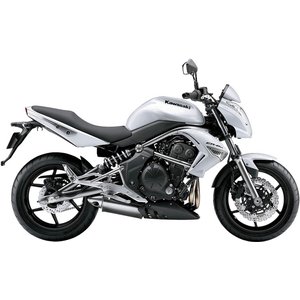Kawasaki ER-6n (2012-2016): The Streetfighter That Balances Fun and Practicality
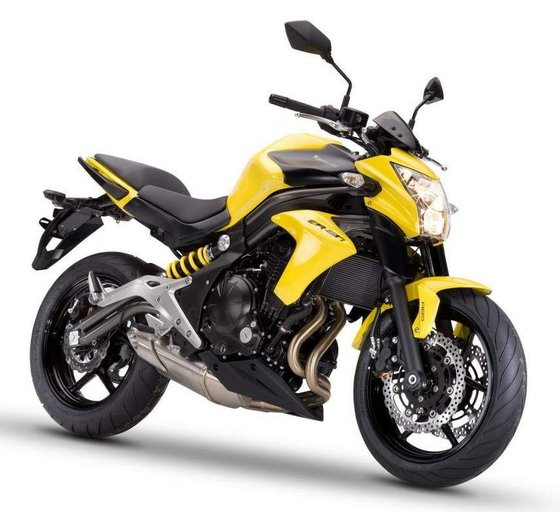
Introduction
The Kawasaki ER-6n, produced from 2012 to 2016, is a motorcycle that refuses to be pigeonholed. It’s a streetfighter with the soul of a commuter, a beginner-friendly machine that doesn’t shy away from thrilling experienced riders. With its angular design, approachable ergonomics, and a punchy parallel-twin engine, this generation of the ER-6n carved out a niche as a versatile middleweight naked bike. After spending a week with a 2014 model, it’s clear why this bike remains a favorite in the used market – and why it’s still relevant for riders seeking a blend of practicality and excitement.
Design: Aggressive Lines Meet Rider-Focused Ergonomics
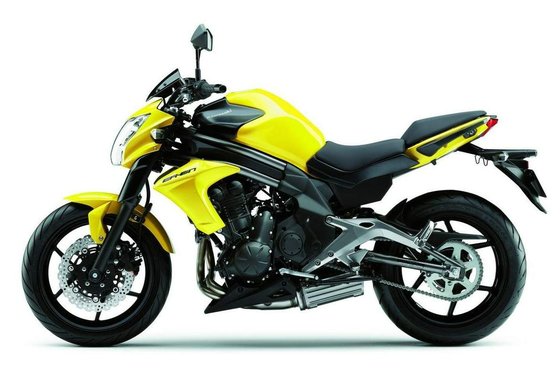
Kawasaki’s designers nailed the streetfighter aesthetic here. The ER-6n looks like it’s perpetually leaning forward, thanks to its 20mm taller fuel tank (16L capacity) that visually concentrates mass at the front. The smoked instrument visor and stacked dual headlights give it a cybernetic glare, while the LED taillight (10mm shorter than previous models) keeps the rear looking sharp.
The double-pipe perimeter frame isn’t just for show – made from high-tensile steel, it’s the backbone of the bike’s 204 kg (449.7 lbs) wet weight. What surprised me was the thoughtful ergonomics:
- 805mm seat height (31.7") feels accessible for most riders
- Wide handlebars offer leverage without stretching
- Rubber-mounted seat bracket reduces vibration transfer to the rider
Ground clearance sits at 130mm (5.1"), enough for spirited cornering without making mount/dismount awkward. The passenger seat deserves praise too – thick cushioning and ergonomic grips make it one of the better pillion setups in the category.
Engine & Performance: Parallel-Twin Personality
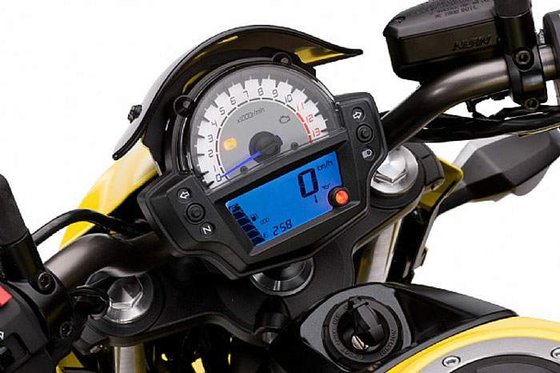
At its heart lies the 649cc liquid-cooled parallel twin – a configuration that splits the difference between a thumping V-twin and a screaming inline-four. Key specs:
- 72.1 hp @ 8,500 rpm (53 kW)
- 66 Nm torque @ 7,000 rpm (48.7 lb-ft)
- 11.3:1 compression ratio
- Euro-III compliant via 3-way catalyser
But numbers don’t tell the full story. Kawasaki tuned this engine for real-world usability:
- Strong low-mid range: 90% of peak torque arrives by 3,500 rpm
- Smooth power delivery thanks to Keihin 38mm throttle bodies
- Under-engine muffler enhances torque below 7,000 rpm
During my ride, the engine felt eager but never intimidating. Roll on the throttle at 4,000 rpm in third gear, and the ER-6n pulls cleanly to redline without vibes intruding through the bars. The 6-speed transmission shifts with a positive click, though the cable-operated clutch could be lighter in stop-and-go traffic.
Fuel consumption averaged 4.7L/100km (50 mpg) during mixed riding, translating to a 340km (211 mi) range from the 16L tank.
Handling & Comfort: Confidence Inspiring, Not Clinical
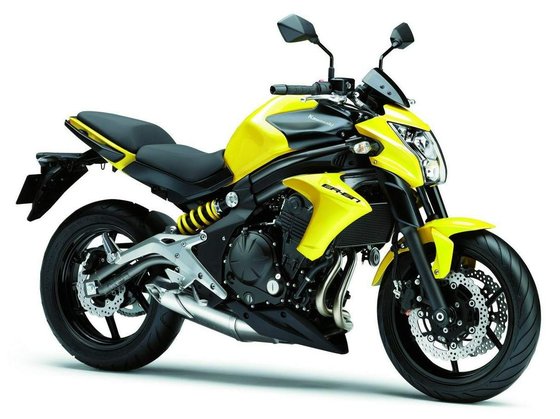
The ER-6n’s chassis philosophy prioritizes approachable handling over track-day precision:
- 41mm telescopic fork with 125mm travel (4.9")
- Offset laydown shock (adjustable preload) with 130mm travel (5.1")
- 102mm trail and 25° rake strike a balance between stability and agility
At speed, the bike feels planted yet willing to change direction. The suspension soaks up broken pavement commendably, though aggressive riders might want more damping control. Braking is handled by dual 300mm front discs with 2-piston calipers and a 220mm rear disc – adequate but not exceptional. ABS (optional) intervenes smoothly.
Standout features:
- ZR17 tires (120/70 front, 160/60 rear) offer great feedback
- 1410mm wheelbase (55.5") contributes to stability
- Narrow 770mm width (30.3") makes lane filtering feasible
Technology & Features: Functional Without Frills
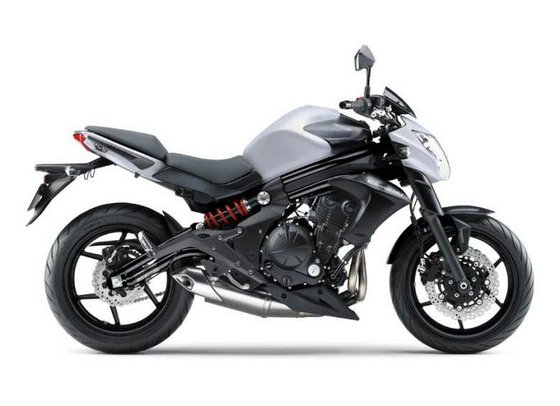
The ER-6n’s tech focuses on usability:
- Stacked instrument cluster: Analog tach with white LED backlight + LCD panel (speed, fuel, clock, consumption data)
- Economical Riding Indicator: Helps maximize fuel efficiency
- Intake ducts through frame tubes: Cooler air for better combustion + throatier induction noise
While lacking modern amenities like ride modes or TFT displays, the simplicity works in its favor. The LED lighting (headlights and taillight) performs admirably at night.
Competition: How It Stacks Up
The middleweight naked segment is fiercely competitive. Here’s how the ER-6n compares:
1. Yamaha MT-07 (2014+)
- Pros: Crossplane CP2 engine character, 18kg lighter
- Cons: Softer suspension, less wind protection
- ER-6n Edge: More neutral riding position, better pillion comfort
2. Suzuki SV650 (2016+)
- Pros: V-twin torque, iconic design
- Cons: Heavier at 197kg, basic instrumentation
- ER-6n Edge: Superior low-RPM smoothness, modern ABS integration
3. Honda CB650F (2014+)
- Pros: Inline-4 soundtrack, premium fit/finish
- Cons: Higher seat (810mm), pricier
- ER-6n Edge: Better fuel efficiency, lower maintenance costs
The Kawasaki’s strength lies in its balance – it’s not the best at any one thing but avoids major compromises.
Maintenance: Keeping the ER-6n in Fighting Shape
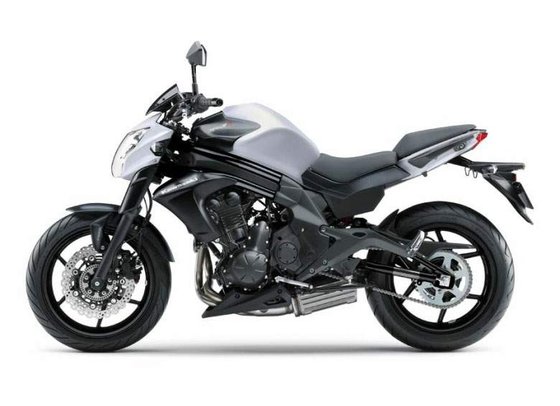
As a MOTOPARTS.store journalist, I’d emphasize these key areas:
1. Chain & Sprockets
- Stock setup: 15T front / 46T rear, 114-link chain
- Upgrade Tip: Swap to an X-ring chain for longer service intervals
- MOTOPARTS Recommendation: DID 520VX3 Chain Kit
2. Oil Changes
- Capacity: 1.8L with filter (SAE 10W-40 synthetic)
- Interval: Every 6,000 km (3,700 mi)
- MOTOPARTS Hack: Use a oil filter wrench adapter for cleaner changes
3. Valve Adjustments
- Intake: 0.15-0.21mm (0.006-0.008")
- Exhaust: 0.22-0.31mm (0.009-0.012")
- Check every 26,000 km (16,000 mi)
4. Suspension Tuning
- Stock shock preload has 7 settings
- MOTOPARTS Upgrade: Hyperpro Progressive Springs for improved damping
5. Brake Maintenance
- Fluid: DOT 4 (replace every 2 years)
- Pad Alternative: EBC HH Sintered Pads for better bite
Common Issues to Watch:
- Clutch cable lubrication (every 5,000 km)
- Coolant replacement every 4 years (1.2L capacity)
- Throttle body sync at major services
Conclusion: The Everyperson’s Streetfighter
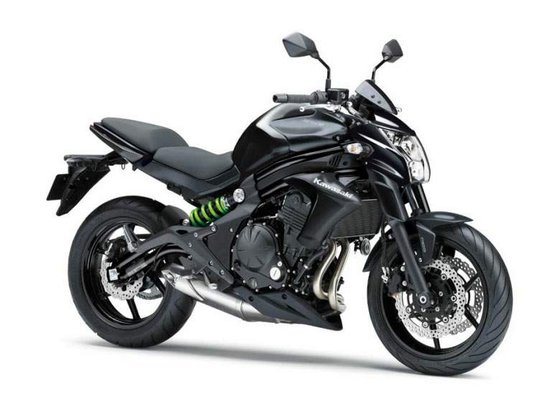
The 2012-2016 Kawasaki ER-6n succeeds by being more than the sum of its parts. It’s a motorcycle that forgives newbie mistakes but still rewards skilled riding. The parallel-twin engine is a gem – flexible enough for city commutes yet willing to play when the roads twist. While not the most powerful or technologically advanced in its class, its combination of accessible performance, manageable weight, and Kawasaki’s renowned reliability make it a compelling choice.
For owners looking to personalize their ER-6n, MOTOPARTS.store offers everything from performance exhausts to ergonomic upgrades – because even the most balanced motorcycles deserve a touch of individuality.
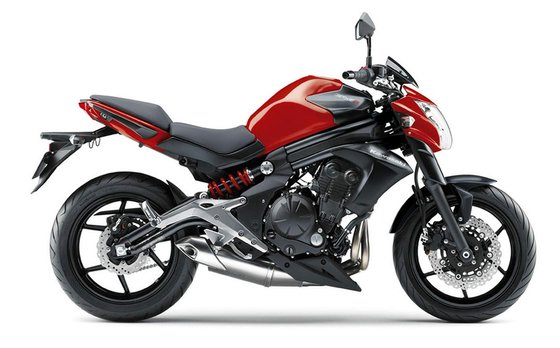
Specifications sheet
| Engine | |
|---|---|
| Stroke: | Four-stroke |
| Max power: | 53 kW | 71.0 hp |
| Max torque: | 66 Nm |
| Fuel system: | Keihin 38mm Electronic Fuel Injection |
| Lubrication: | Wet sump |
| Max power @: | 8500 rpm |
| Displacement: | 649 ccm |
| Max torque @: | 7000 rpm |
| Configuration: | Inline |
| Cooling system: | Liquid-cooled |
| Compression ratio: | 11.3:1 |
| Number of cylinders: | 2 |
| Dimensions | |
|---|---|
| Wheelbase: | 1410 mm (55.5 in) |
| Wet weight: | 204 |
| Seat height: | 805 mm (31.7 in) |
| Overall width: | 770 mm (30.3 in) |
| Overall height: | 1110 mm (43.7 in) |
| Overall length: | 2110 mm (83.0 in) |
| Ground clearance: | 130 mm (5.1 in) |
| Fuel tank capacity: | 16 L (4.2 US gal) |
| Drivetrain | |
|---|---|
| Final drive: | chain |
| Gear ratios: | {'1st': '2.438 (39/16)', '2nd': '1.714 (36/21)', '3rd': '1.333 (32/24)', '4th': '1.111 (30/27)', '5th': '0.966 (28/29)', '6th': '0.852 (23/27)'} |
| Chain length: | 114 |
| Transmission: | 6-speed manual |
| Rear sprocket: | 46 |
| Front sprocket: | 15 |
| Electrical | |
|---|---|
| Battery: | 12V 8.6Ah |
| Ignition: | Digital TCBI |
| Headlight: | Dual 55W halogen |
| Tail light: | LED |
| Maintenance | |
|---|---|
| Engine oil: | 10W40 |
| Brake fluid: | DOT 4 |
| Spark plugs: | NGK CR9EIA-9 |
| Spark plug gap: | 0.8 |
| Coolant capacity: | 1.2 |
| Engine oil capacity: | 1.8 |
| Chain maintenance interval: | Every 1000 km or after wet riding |
| Engine oil change interval: | Every 5000 km or 2 years |
| Valve clearance (intake, cold): | 0.15–0.21 mm |
| Valve clearance check interval: | 24,000 km / 15,000 mi |
| Valve clearance (exhaust, cold): | 0.22–0.31 mm |
| Recommended tire pressure (rear): | 2.5 bar (36 psi) solo, 2.8 bar (41 psi) with passenger |
| Recommended tire pressure (front): | 2.25 bar (33 psi) |
| Chassis and Suspension | |
|---|---|
| Rake: | 25° |
| Frame: | High-tensile steel perimeter frame |
| Trail: | 102 mm (4.0 in) |
| Rear tire: | 160/60z-17 |
| Front tire: | 120/70z-17 |
| Rear brakes: | Single 220mm petal disc with 1-piston caliper (ABS optional) |
| Front brakes: | Dual 300mm petal discs with 2-piston calipers (ABS optional) |
| Rear suspension: | Offset laydown single-shock with adjustable preload, 130 mm (5.1 in) travel |
| Front suspension: | 41mm telescopic fork, 125 mm (4.9 in) travel |



